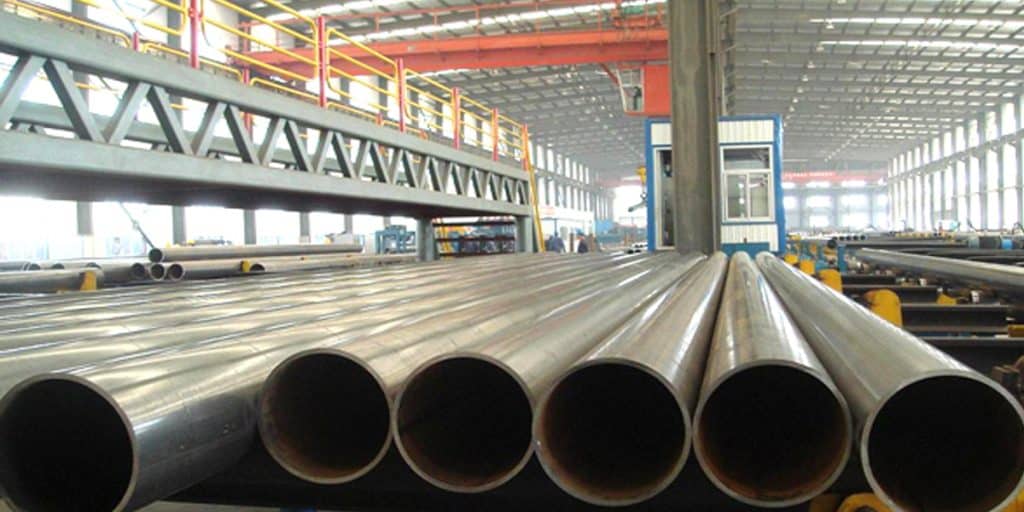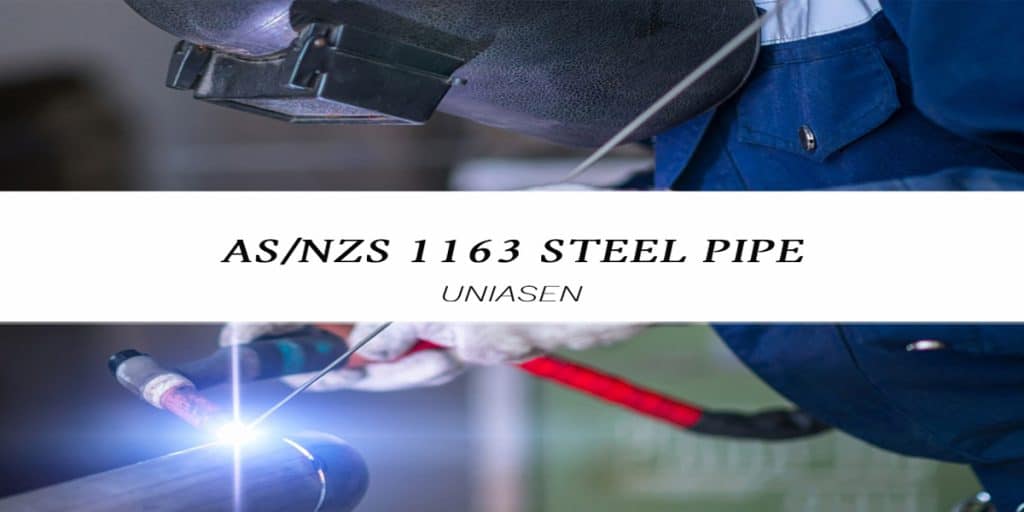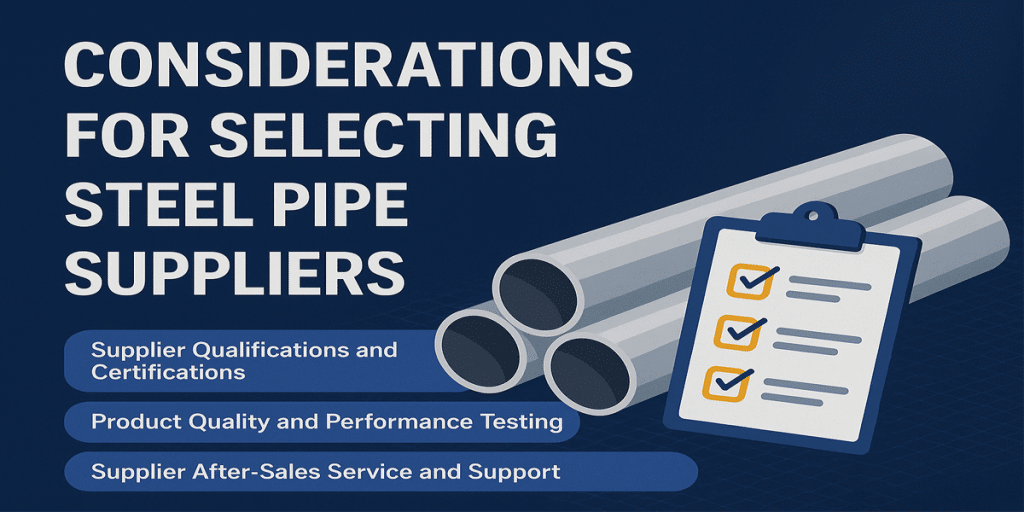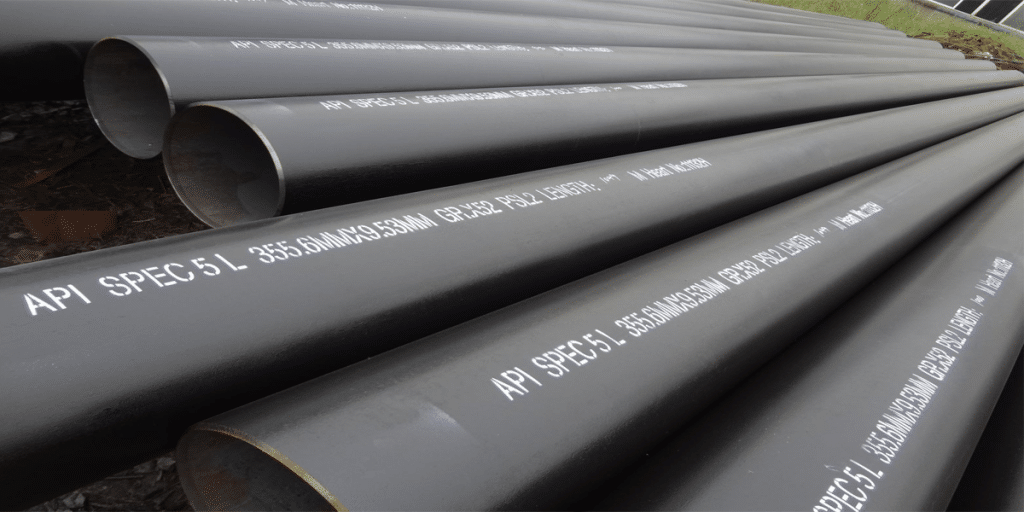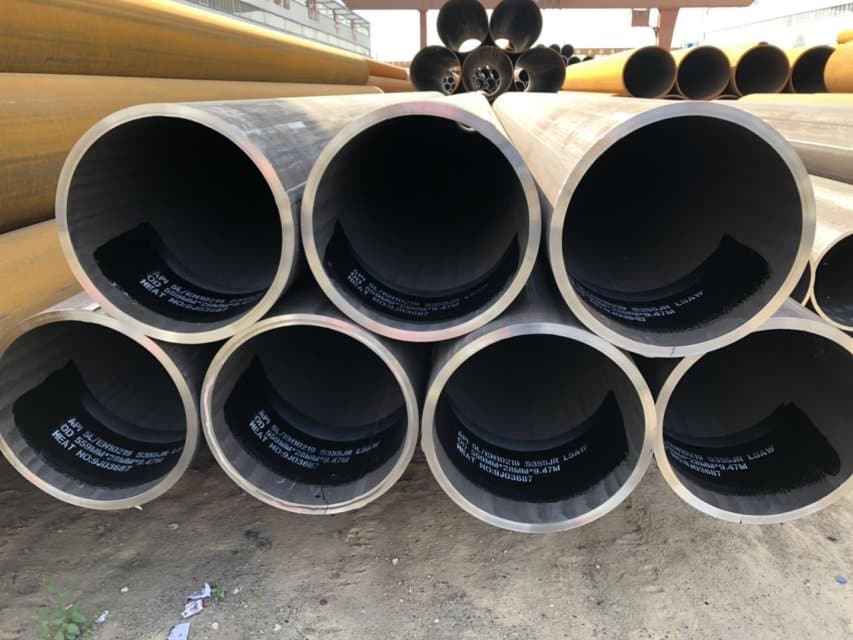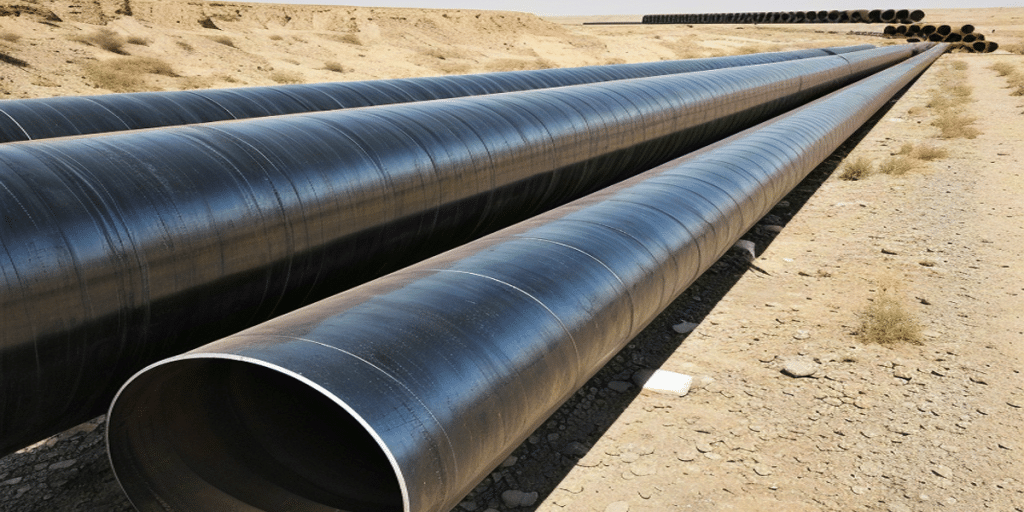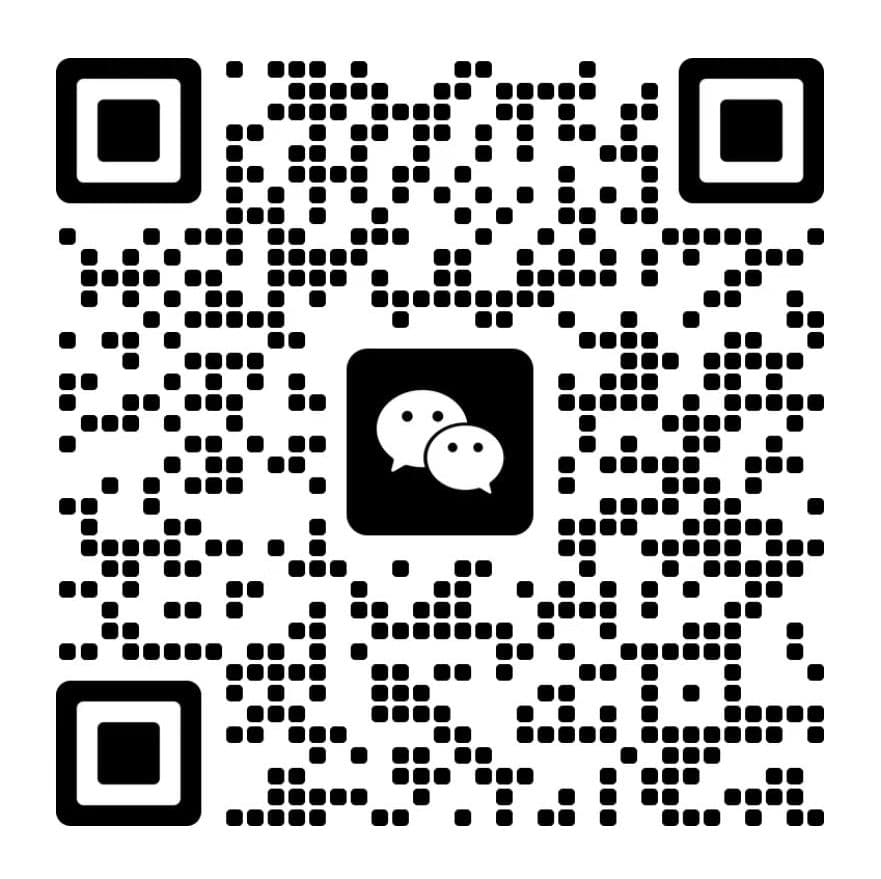- 1. Why Are These Methods Important for Procurement Decisions?
- 2. Specific Requirements in ASTM A53
- 3. Core Testing Methods – Purposes, Implementation Steps, and ASTM Key Points
- 4. Acceptance Criteria and Contract Terms (Mitigating Procurement Risks)
- 5. LONGMA’s Advantages
- 6. A Quick Reference Table
- 7. Conclusion – Recommendations for Procurement Managers
In ASTM A53, the key “nondestructive electric tests” for different types of pipes (Type E/F Welded Pipes, Type S Seamless Pipes) include electromagnetic/ultrasonic methods such as Ultrasonic Testing (UT), Eddy Current Testing (EC), and Flux Leakage Testing. The standard explicitly designates these methods as inspection bases in the form of Practices (e.g., E213, E273, E309, E570) and specifies requirements for inspection calibration, reference standards, acceptance limits, and markings (e.g., “NDE”).
Why Are These Methods Important for Procurement Decisions?
- Coverage and Efficiency: UT enables full cross-sectional volumetric inspection, while EC/Flux Leakage testing is sensitive to surface and near-surface defects. The combined use of these methods effectively reduces the risk of “missed detections,” which is crucial for lowering subsequent operational failures and rework costs.
- Standardization and Traceability: ASTM A53 clearly identifies these testing methods as the basis for agreements between manufacturers and purchasers. Reports and markings (e.g., “NDE”) can be directly used for verifying compliance with acceptance contract terms and allocating risks.
Specific Requirements in ASTM A53
- Section 9 (Nondestructive Electric Test): It stipulates that weld inspection for Type E/F Grade B pipes shall adopt E213, E273, E309, or E570. For Type S (Seamless) pipes, these methods can be used as alternative processes for full-volume nondestructive electric testing of the entire pipe, with the requirement to mark “NDE”. Additionally, the standard specifies requirements for reference standard blocks, calibration verification frequency, and acceptance limits (see Table 3).
Core Testing Methods – Purposes, Implementation Steps, and ASTM Key Points
1.Visual Testing (VT)
- Purpose: To initially identify weld/surface anomalies (cracks, incomplete penetration, slag inclusions, surface roughness, or weld reinforcement) and designate target areas for subsequent NDT.
- Steps: Cleaning → Inspection with magnification/illumination → Recording defect locations and dimensions → Conducting further NDT assessment for major defects.
- ASTM Note: VT serves as a preliminary step for other methods and can significantly improve the efficiency of subsequent inspections.
2. Ultrasonic Testing (UT, Practices E213 / E273)
- Purpose: To locate and estimate the size of volumetric defects (porosity, slag inclusions, cracks, lack of fusion, etc.). E213 is used for volumetric inspection of pipe bodies, while E273 is specifically dedicated to ultrasonic testing technologies and procedures for weld zones.
- Key Implementation Points: Select contact/immersion/phased array ultrasonic testing (PAUT) technologies. Use reference standards with the same diameter and thickness as the product (the standard requires calibration with internal/external notches or drilled holes) and verify equipment effectiveness at the specified frequency/operation speed. ASTM A53 mandates that the signal amplitude generated by reference standards be used as the acceptance benchmark (percentage thresholds are provided in the table).
3.Eddy Current Testing (EC, Practice E309)
- Purpose: Sensitive to short and abrupt surface and near-surface defects (cracks, slag inclusions, local dents) in ferromagnetic or demagnetized pipe components. Suitable for high-speed online or full-length scanning.
- Key Implementation Points: Adopt magnetic saturation + eddy current sensors, and calibrate sensitivity and rejection thresholds in accordance with ASTM E309. Note: In practice, acceptance criteria need to be specified; E309 itself does not mandate acceptance standards.
4. Flux Leakage Testing (FL, Practice E570)
- Purpose: Efficiently detect surface and near-surface defects (cracks, inclusions, delaminations, weld defects, etc.) in ferromagnetic materials. Commonly used for random inspection of seamless pipe or weld quality.
- Key Implementation Points: Magnetize the pipe body and scan using detection coils or probes. Calibration and reference blocks are equally critical; E570 outlines requirements for equipment, operator qualifications, and signal interpretation.
5.Radiographic Testing (RT)
- Explanation: Although ASTM A53 primarily references “nondestructive electric test” practices, radiographic testing (RT) remains a commonly used method in the pipeline manufacturing and weld verification industry. It is sometimes used as a substitute or supplement for UT (especially for visualizing internal weld defects). Manufacturers determine the selection and comparison of RT/UT based on contractual agreements.
Acceptance Criteria and Contract Terms (Mitigating Procurement Risks)
- ASTM A53 clearly specifies requirements for the calibration of reference standard blocks and acceptance limits for signal amplitude (see Table 3): Defects exceeding the proportion of reference signals are deemed non-conforming, unless the manufacturer can demonstrate that the effective wall thickness is not affected (with wall thickness loss not exceeding 12.5%). During procurement contract negotiations, “testing methods, acceptance criteria, calibration certificates, and NDE reports” should be included in the Purchase Order (PO) to ensure traceable inspection records upon delivery.
LONGMA’s Advantages
- Over 20 Years of Pipe Manufacturing Experience: In-depth understanding of the rigid requirements for quality and traceability in engineering projects.
- In-House Laboratory and Visualized Inspection Processes: LONGMA’s in-house laboratory is equipped with phased array/conventional UT scanning stations, as well as eddy current and flux leakage testing equipment. It can conduct inspections in accordance with ASTM E213/E273/E309/E570 and generate NDE reports with standard references and calibration certificates (customers may request inspection photos, A-scan/B-scan data, and reports). (Note: Specific inspection items and certificates are provided in accordance with the procurement contract or order agreements.)
- Mitigating Procurement Risks: We can complete NDE for key welds and entire pipes before delivery, issue “Certificates of Inspection (including NDE specifications)” in compliance with ASTM A53 requirements, and help purchasers proactively address quality risks and institutionalize risk management.
A Quick Reference Table
| Method | Inspection Targets | Advantages | ASTM References |
| Ultrasonic (UT / PAUT) | Volumetric defects, welds | Penetrating, quantifiable (defect depth/location) | E213 / E273; Referenced in ASTM A53 §9. |
| Eddy Current (EC) | Short/abrupt surface/near-surface defects | High-speed online inspection, high sensitivity | E309; Cited as an optional electric test method in ASTM A53. |
| Flux Leakage (FL) | Surface/near-surface defects | Suitable for ferromagnetic pipes, rapid screening | E570; Referenced in ASTM A53. |
| Radiographic (RT) | Internal weld defects | Intuitive visual imaging (radiation safety required) | Commonly used in the industry; adopted as per contract agreements. |
| Visual (VT) | Starting point for surface defect detection | Essential preliminary step | Industry common practice (used in conjunction with other NDT methods). |
Conclusion – Recommendations for Procurement Managers
- Clearly specify testing methods and acceptance criteria in purchase orders (referencing ASTM A53 and corresponding Practices).
- Require manufacturers to submit calibration records, reference standard descriptions, NDE reports, and “NDE” markings (particularly important for seamless pipes).
- Prioritize suppliers with in-house laboratories and the capability to implement ASTM standards (such as LONGMA) to simplify the acceptance process and reduce on-site rework and service life risks.
Want to convert the NDT requirements of ASTM A53 into actionable inspection checklists and contract terms for your project? We can integrate LONGMA’s inspection SOPs, typical inspection report samples, and quotations into a delivery package to help you directly incorporate them into procurement contracts. If you wish, we can now draft a standard clause that can be directly included in your Purchase Order (PO).

